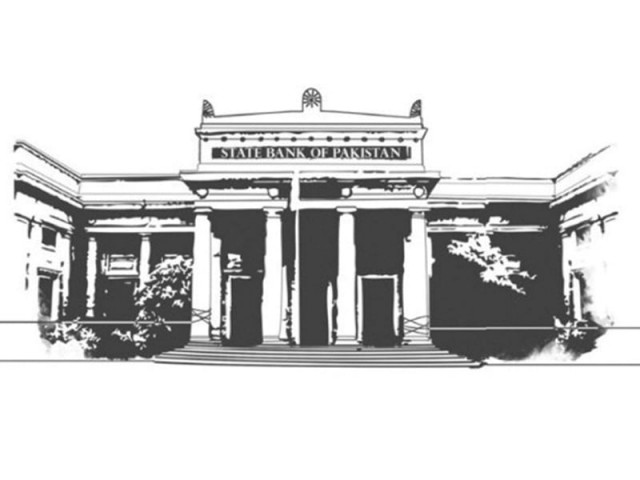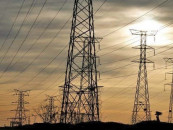Shrinking spreads: When interest income comes under strain
Drop in earnings should prompt banks to look for diversified revenue streams .

SBP is keen to ensure that banks will have to lend more to the private sector to earn higher spreads CREATIVE COMMONS
These are interesting times in the Pakistani banking sector. After several years of abnormal profits that belied the depressed (and depressing) economic conditions, banks are experiencing a drop in earnings because of shrinking spreads. I believe these shrinking profits will benefit the sector in the long run: the morphine drip is running dry, forcing the banks to evolve their strategies and think more carefully about sustainable business models. Successfully building a sustainable model involves developing diversified revenue streams such as trade finance, consumer lending, alternative banking channels, branchless banking and the SME sector.
Pakistan has a relatively strong and competitive banking sector. In the past two decades the privatisation of the major banks – HBL, UBL, MCB and ABL – and the entry of international players have contributed towards rapid progress in terms of regulation, technology, systems, organisational culture and human resources. There are currently 5 public sector, 17 private, 5 Islamic and 7 foreign banks in Pakistan. The SBP has gradually raised capital requirements and has expressly stated its intention to create conditions conducive to further consolidation in the field.
The four major privatised banks and National Bank of Pakistan (NBP) have a significant share of the market (53% of industry assets in FY2012) and are commonly referred to as the Big 5. NBP experiences all the advantages and disadvantages that come with being a government owned bank and is an altogether different animal. The remaining four comprise 40% of the assets: their size and outreach grant them significant economies of scale and scope as is evidenced by their average ROE of 22% compared to the industry average of 15%.
In the last five years, large scale government borrowing to finance an ever increasing budget deficit and risk aversion in lending has led to commercial banks investing heavily in treasury bills. The excessive government borrowing from commercial banks has crowded out the private sector resulting in financial disintermediation. In the three year period 2010-2012, industry deposits grew annually at 15.6% while industry advances (loans) only grew 5.6% showing that banks have been increasing investments, specifically in government borrowing. Advances to Deposit Ratios for most developed markets range between 80% and 120%, but are around 55% for Pakistani banks. The model has been simple: use depositors’ funds to buy treasuries and run a skeleton crew on the credits side.
The squeeze
Low cost of deposits and a high discount rate because of rising inflation has resulted in large banking spreads with minimal effort on the part of banks. This situation is now changing; government borrowing from scheduled banks is close to Rs2.5 trillion – unsustainable for banks as the government cannot afford to repay this amount any time soon
SBP is keen to ensure that banks will have to lend more to the private sector to earn higher spreads
The commercial banks have reaped large profits at the cost of depositors and borrowers and the SBP is now focusing on reducing it by increasing minimum required saving rate offered on savings accounts from 5% to 6.5% linked to the repo rate. At 6.5%, real returns on savings are still negative and in the longer run the SBP might move it even higher. The discount rate has also been brought down to 9% from 12% last year because of lower inflation and industry pressure.
The game plan
With core revenue stream (interest income) under stress, banks have to focus on two things:
Shore up interest income by mobilising additional deposits and increasing lending. Interest income will always be the bread and butter for a bank. Traditionally banks have tried to attract Casa (current and savings) deposit because it is low cost and stable. High Casa ratios are seen as an indicator of strong fundamentals. Given that Savings Deposits have a cost of 6.5% (even higher in tier-based accounts), Current Deposit is now the focus area and we are already seeing aggressive marketing and product offerings as banks compete for current deposits. These are harder to come by as customers are becoming increasingly rate sensitive and ubiquitous daily return tier-based deposit products mean even transactional accounts can earn high rates on a daily basis.
Banks will also look to increase advances, but it will take a bit longer for them to realign their structures to scale up lending.
Increase revenue from non-interest income side. This is consistent with most developed markets where fee & commission income constitutes a much larger percentage of total income from customers. At present Fee, Commission and Brokerage Income on an average contributes 10% – 20% to the total revenues for the banks. They will want to increase this up to around 30% in the medium term.
Published in The Express Tribune, November 4th, 2013.
Like Business on Facebook, follow @TribuneBiz on Twitter to stay informed and join in the conversation.



















COMMENTS
Comments are moderated and generally will be posted if they are on-topic and not abusive.
For more information, please see our Comments FAQ